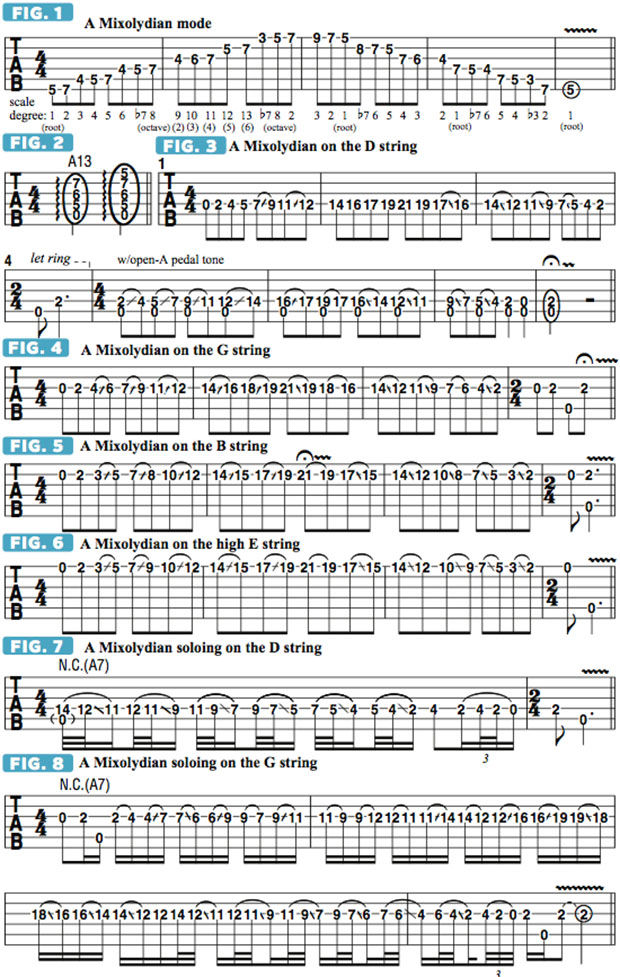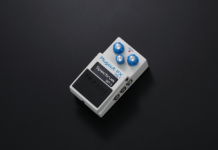
Meet the A Mixolydian Mode, Up and Down on Each String
When jamming, guitarists are always challenged by the task of creating interesting, evolving rhythm parts behind a soloist. In my experiences, I have found the study of modal chord patterns and structures to be tremendously useful in this regard and endlessly interesting. I recently devoted a few columns to the study of building chord shapes, or “grips,” and patterns from modal structures.
When jamming, guitarists are always challenged by the task of creating interesting, evolving rhythm parts behind a soloist.
In my experiences, I have found the study of modal chord patterns and structures to be tremendously useful in this regard and endlessly interesting.
I recently devoted a few columns to the study of building chord shapes, or “grips,” and patterns from modal structures, focusing on two of the most widely used minor modes, Dorian and Aeolian.
This month, I’d like to turn your attention to one of the major modes, Mixolydian. The Mixolydian mode is spelled: 1(root) 2 3 4 5 6 b7. It is essentially a major scale with the seventh degree lowered, or “flatted.”
FIGURE 1 illustrates the A Mixolydian mode played in fourth position in two and a half octaves, with the intervals, or scale degrees, indicated below the tab. Memorize each note’s relationship to the A root note. Also, be aware that when playing in the second octave (beginning in bar 2), the first few notes may be reckoned in two ways: the B note may be referred to as either the second or the ninth, the C# may be considered the third or the 10th, the D note can be thought of as either the fourth or the 11th, and so on.
In previous columns, I showed you how to generate interesting and unusual chord voicings by using stacked fourths while staying within a particular scale or mode, wherein each chord tone is a fourth higher than the one below it, either a perfect fourth or a raised, or “sharped,” fourth.
FIGURE 2 illustrates two different forms of an A13 chord. Starting from the G note on the D string’s fifth fret, the next higher note in the chord is C#, the major third, and the next higher note is F#, a perfect fourth above C#. One can also place an additional high A root note as the highest note in the chord, as shown in the second chord voicing. The best way to get a firm handle on the A Mixolydian mode is to practice playing it up and down each individual string.
FIGURE 3 shows A Mixolydian played entirely on the D string, with the open A string used as an accompanying pedal tone in order to put all the notes in context relative to an A tonal center.
FIGURES 4–6 illustrate A Mixolydian played up and down the G, B and high E strings, respectively.
After you’ve practiced playing A Mixolydian straight up and down each string, the next step is to try improvising some solo-type phrases up and down a single string, as I demonstrate on the D string in FIGURE 7, using a repeating rhythmic motif based on two 32nd notes followed by a 16th note with pull-offs and finger slides, which create a smooth legato sound. FIGURE 8 shows a different rhythmic syncopation used on the G string. Try doing the same thing on all the other strings.

Source: www.guitarworld.com









